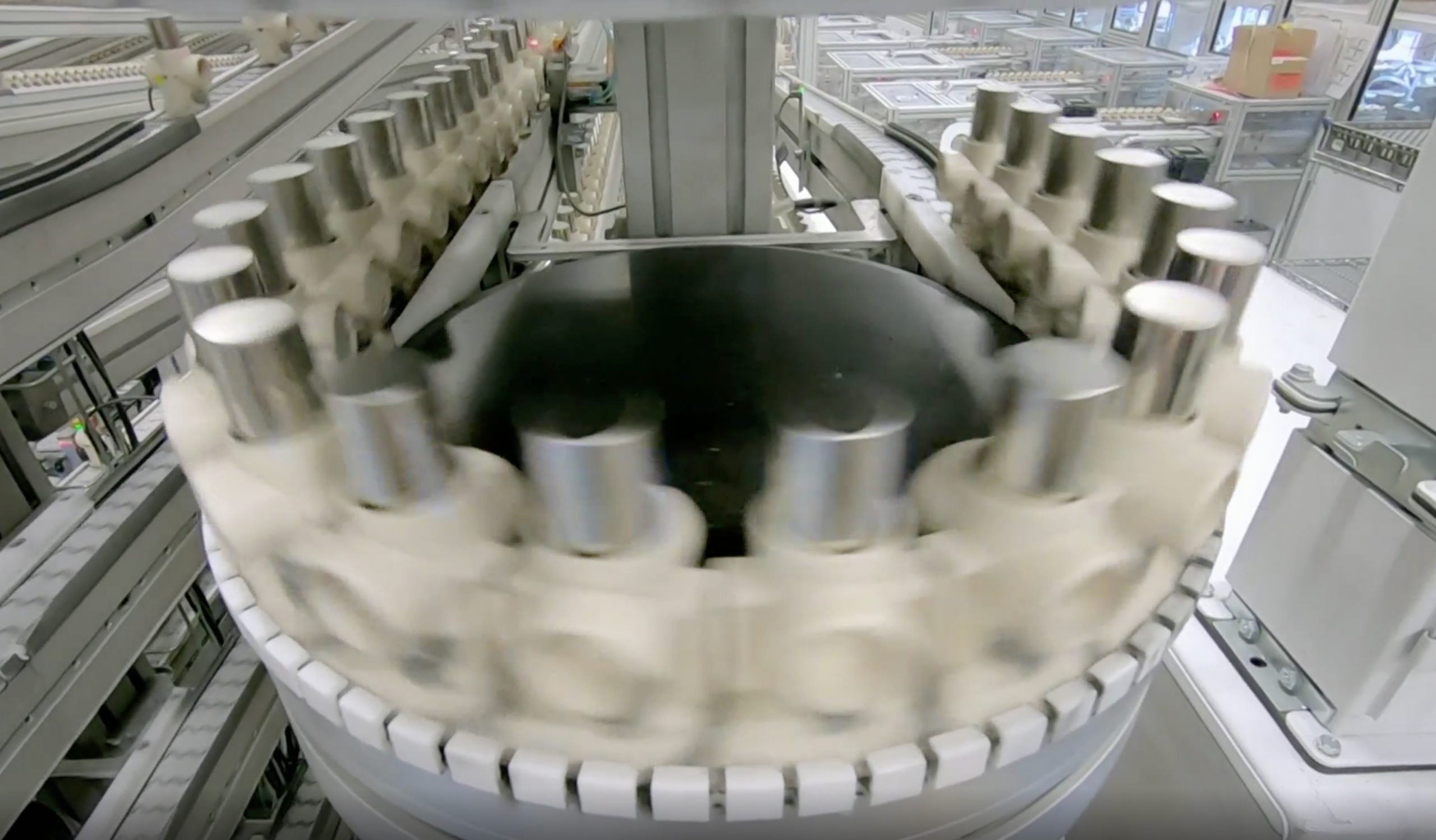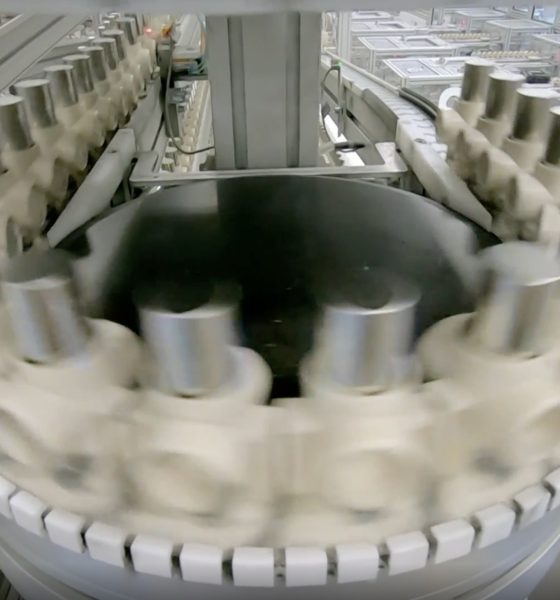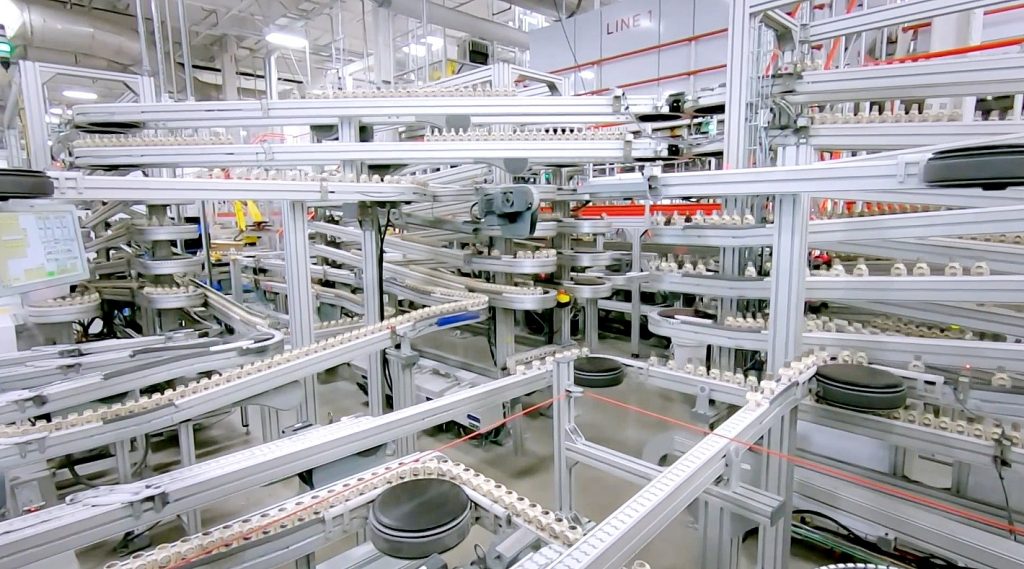

News
Tesla’s cobalt-free efforts are being closely watched by LG Chem, Samsung ahead of Battery Day
It appears that it is not only the electric vehicle community that is eagerly anticipating Tesla’s upcoming Battery Day event. Considering the company’s place in the EV movement, as well as its efforts in pursuing a cobalt-free solution for batteries, industry leaders like Samsung and LG Chem are reportedly watching Tesla and its battery announcements closely.
Battery Day has been mentioned by Elon Musk multiple times in the past, and last month, the company noted that the highly-anticipated event will be held on September 22. The CEO has informed analysts that Battery Day will include a “big reveal” of developments in Tesla’s battery efforts. The effects of such developments on the battery supply chain are also expected to be discussed.
Tesla has kept details of Battery Day secret, though industry officials have noted that details on new cobalt-free batteries will be revealed at the upcoming event. Tesla has been working on reducing its batteries’ cobalt content for years, as evidenced by a study from a German firm that determined that Model 3 batteries have 75% less cobalt than the cells used by companies like Volkswagen. In the second-quarter earnings call, Elon Musk noted that eventually, cobalt will be phased out completely.
EV battery makers such as LG Chem and Samsung have mostly favored nickel manganese cobalt (NMC) or nickel cobalt aluminum (NCA) batteries over cobalt-free lithium iron phosphate (LFP) chemistry due to their higher energy density, which allows vehicles to travel longer distances. LFP batteries are more environmentally-friendly and cost-effective, but they tend to be limited when it comes to range. This status quo seems poised to change with Battery Day, at least if speculations prove accurate.
Reports have emerged stating that CATL, one of Tesla’s battery partners in China, has begun supplying LPF batteries for the electric car maker’s locally-produced Model 3. Elon Musk emphasized this in the Q2 2020 earnings call, when he stated that Tesla will be boosting volume production in China of LFP battery packs for the Model 3. By the end of July, Panasonic, Tesla’s longtime battery partner, informed Reuters that it will be commercializing a cobalt-free battery in two to three years for the electric car maker.
Amidst these reports, industry leaders like LG Chem and Samsung are now facing what could very well be a crossroads with their battery strategy. If Tesla has come up with a way to solve the shortcomings of LFP batteries, there is a good chance that the battery industry could also start moving away from cobalt. Tesla, after all, is one of the world’s leading electric car maker, and its EV and energy storage business are both undergoing an aggressive expansion. Cobalt is also a controversial material to begin with, thanks to questionable mining practices in areas such as the Congo.

That being said, LG Chem has stated that it still believes that NMC chemistry will remain the mainstream in the global market due to its energy density advantages. “Though we are producing LFP batteries too, these have their shortcomings in energy density and weight. We believe NCM will remain the mainstream in the global EV battery market,” the company stated during its second-quarter conference call.
Samsung SDI was on the same page, stating that it will be focusing on NCA technology. Citing an industry official who requested anonymity, The Korea Times noted that Samsung is paying close attention to what Tesla will be announcing and unveiling on Battery Day.
“Many battery firms have tried to upgrade the energy density of LFP chemistry, but they have yet to have meaningful outcomes. Tesla is now saying it is increasing its reliance on LFP batteries and is anticipated to come up with information on new cobalt-free batteries during Battery Day. This can either mean that Tesla and CATL have come up with technology to improve the efficiency of LFP batteries or unprecedented technology in removing cobalt,” he said. “Since either way will likely affect the industrial trend, domestic companies are paying attention to what Tesla will reveal during the event,” the industry insider stated.
Tesla’s Battery Day event is expected to be held on September 22, 2020. A live audience is expected to be present, though the event will also be live-streamed.

News
Tesla FSD fleet is nearing 7 billion total miles, including 2.5 billion city miles
As can be seen on Tesla’s official FSD webpage, vehicles equipped with the system have now navigated over 6.99 billion miles.

Tesla’s Full Self-Driving (Supervised) fleet is closing in on almost 7 billion total miles driven, as per data posted by the company on its official FSD webpage.
These figures hint at the massive scale of data fueling Tesla’s rapid FSD improvements, which have been quite notable as of late.
FSD mileage milestones
As can be seen on Tesla’s official FSD webpage, vehicles equipped with the system have now navigated over 6.99 billion miles. Tesla owner and avid FSD tester Whole Mars Catalog also shared a screenshot indicating that from the nearly 7 billion miles traveled by the FSD fleet, more than 2.5 billion miles were driven inside cities.
City miles are particularly valuable for complex urban scenarios like unprotected turns, pedestrian interactions, and traffic lights. This is also the difference-maker for FSD, as only complex solutions, such as Waymo’s self-driving taxis, operate similarly on inner-city streets. And even then, incidents such as the San Francisco blackouts have proven challenging for sensor-rich vehicles like Waymos.
Tesla’s data edge
Tesla has a number of advantages in the autonomous vehicle sector, one of which is the size of its fleet and the number of vehicles training FSD on real-world roads. Tesla’s nearly 7 billion FSD miles then allow the company to roll out updates that make its vehicles behave like they are being driven by experienced drivers, even if they are operating on their own.
So notable are Tesla’s improvements to FSD that NVIDIA Director of Robotics Jim Fan, after experiencing FSD v14, noted that the system is the first AI that passes what he described as a “Physical Turing Test.”
“Despite knowing exactly how robot learning works, I still find it magical watching the steering wheel turn by itself. First it feels surreal, next it becomes routine. Then, like the smartphone, taking it away actively hurts. This is how humanity gets rewired and glued to god-like technologies,” Fan wrote in a post on X.
News
Tesla starts showing how FSD will change lives in Europe
Local officials tested the system on narrow country roads and were impressed by FSD’s smooth, human-like driving, with some calling the service a game-changer for everyday life in areas that are far from urban centers.

Tesla has launched Europe’s first public shuttle service using Full Self-Driving (Supervised) in the rural Eifelkreis Bitburg-Prüm region of Germany, demonstrating how the technology can restore independence and mobility for people who struggle with limited transport options.
Local officials tested the system on narrow country roads and were impressed by FSD’s smooth, human-like driving, with some calling the service a game-changer for everyday life in areas that are far from urban centers.
Officials see real impact on rural residents
Arzfeld Mayor Johannes Kuhl and District Administrator Andreas Kruppert personally tested the Tesla shuttle service. This allowed them to see just how well FSD navigated winding lanes and rural roads confidently. Kruppert said, “Autonomous driving sounds like science fiction to many, but we simply see here that it works totally well in rural regions too.” Kuhl, for his part, also noted that FSD “feels like a very experienced driver.”
The pilot complements the area’s “Citizen Bus” program, which provides on-demand rides for elderly residents who can no longer drive themselves. Tesla Europe shared a video of a demonstration of the service, highlighting how FSD gives people their freedom back, even in places where public transport is not as prevalent.
What the Ministry for Economic Affairs and Transport says
Rhineland-Palatinate’s Minister Daniela Schmitt supported the project, praising the collaboration that made this “first of its kind in Europe” possible. As per the ministry, the rural rollout for the service shows FSD’s potential beyond major cities, and it delivers tangible benefits like grocery runs, doctor visits, and social connections for isolated residents.
“Reliable and flexible mobility is especially vital in rural areas. With the launch of a shuttle service using self-driving vehicles (FSD supervised) by Tesla in the Eifelkreis Bitburg-Prüm, an innovative pilot project is now getting underway that complements local community bus services. It is the first project of its kind in Europe.
“The result is a real gain for rural mobility: greater accessibility, more flexibility and tangible benefits for everyday life. A strong signal for innovation, cooperation and future-oriented mobility beyond urban centers,” the ministry wrote in a LinkedIn post.
News
Tesla China quietly posts Robotaxi-related job listing
Tesla China is currently seeking a Low Voltage Electrical Engineer to work on circuit board design for the company’s autonomous vehicles.

Tesla has posted a new job listing in Shanghai explicitly tied to its Robotaxi program, fueling speculation that the company is preparing to launch its dedicated autonomous ride-hailing service in China.
As noted in the listing, Tesla China is currently seeking a Low Voltage Electrical Engineer to work on circuit board design for the company’s autonomous vehicles.
Robotaxi-specific role
The listing, which was shared on social media platform X by industry watcher @tslaming, suggested that Tesla China is looking to fill the role urgently. The job listing itself specifically mentions that the person hired for the role will be working on the Low Voltage Hardware team, which would design the circuit boards that would serve as the nervous system of the Robotaxi.
Key tasks for the role, as indicated in the job listing, include collaboration with PCB layout, firmware, mechanical, program management, and validation teams, among other responsibilities. The role is based in Shanghai.
China Robotaxi launch
China represents a massive potential market for robotaxis, with its dense urban centers and supportive policies in select cities. Tesla has limited permission to roll out FSD in the country, though despite this, its vehicles have been hailed as among the best in the market when it comes to autonomous features. So far, at least, it appears that China supports Tesla’s FSD and Robotaxi rollout.
This was hinted at in November, when Tesla brought the Cybercab to the 8th China International Import Expo (CIIE) in Shanghai, marking the first time that the autonomous two-seater was brought to the Asia-Pacific region. The vehicle, despite not having a release date in China, received a significant amount of interest among the event’s attendees.








